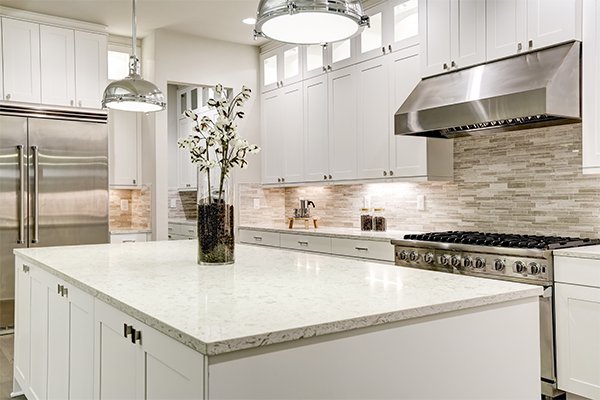Introduction: The Mystery Behind Granite Cracks
Granite is renowned for its strength, durability, and timeless beauty. Whether it’s a mountain range or a polished granite countertop, this rock stands the test of time—literally. Yet, even granite eventually shows signs of wear, especially in the form of cracks and fractures. These features often result from mechanical weathering, a process that gradually breaks down rock without altering its chemical composition.
In this article, we’ll explore the geologic processes that create cracks in granite, explain why these cracks form, and connect this phenomenon to granite’s journey from the Earth’s crust to a countertop in your home.

Granite Overview: Composition and Characteristics
Granite is an intrusive igneous rock formed when silica-rich magma cools slowly deep underground. This slow cooling allows large crystals of quartz, feldspar, and mica to grow, giving granite its signature coarse-grained appearance.
For deeper insight, see:
Key characteristics of granite include:
- High compressive strength
- Low porosity
- Resistance to weathering—though not immune

The Weathering Process That Causes Granite Cracks
The cracks in a simulated granite outcrop are typically an example of mechanical (physical) weathering, specifically exfoliation or jointing.
1. Mechanical Weathering Defined
Mechanical weathering physically breaks granite into smaller pieces without changing its mineral makeup. The most common causes include:
- Thermal expansion and contraction from temperature fluctuations
- Frost wedging, where water seeps into cracks, freezes, and expands
- Pressure release, when overlying rock is removed, allowing granite to expand and fracture
2. Role of Joints in Granite
Joints are natural fractures in the rock that occur without movement along the fracture. They provide pathways for water and air, accelerating weathering.
3. The Onion-Like Peeling Effect
Over time, surface layers of granite may peel away in sheets (exfoliation), similar to the process described in spheroidal weathering. This is often seen in large exposed granite domes.
Granite’s Path From Quarry to Countertop
While natural granite in the field may develop cracks from mechanical stress, the slabs used in homes are cut and polished to perfection. The Aardwolf granite countertop collection offers premium granite slabs in a variety of colors—protected during transit and installation with equipment like a kerb stone for edge safety.
When comparing materials for your home, check:
- What’s the Difference Between Quartz and Granite Countertops?
- Are Granite Countertops Cheaper or More Expensive Than Quartz?
Maintaining Granite Indoors
Indoor white granite countertops and black granite countertops don’t face the same intense weathering as exposed rock. Still, care is essential:
- Clean granite countertops with pH-neutral cleaners
- Sealing granite to prevent moisture penetration
- Repairing chips in granite promptly to avoid worsening damage
- Polishing granite surfaces to maintain luster
- Removing stains from granite to preserve beauty
Natural vs. Engineered Granite
Natural granite—as found in the environment—is more susceptible to weathering over thousands of years. Engineered granite, a blend of crushed stone and resin, has fewer natural joints and is more uniform, making it less prone to cracking from natural processes.
The Geological Significance of Granite Cracks
Cracks in granite tell the story of stress release, environmental exposure, and the immense time scales over which rocks evolve. Studying them helps geologists understand past climates, tectonic activity, and erosion patterns.
Conclusion: Cracks as Nature’s Signature
The cracks in a simulated granite outcrop are classic examples of mechanical weathering, often involving joint formation, exfoliation, and freeze-thaw processes. Even one of Earth’s toughest rocks—celebrated in the Aardwolf premium granite slabs—is shaped by nature’s forces.
From mountain ranges to modern kitchens, granite’s journey is a testament to its beauty, resilience, and the natural processes that sculpt our planet.

